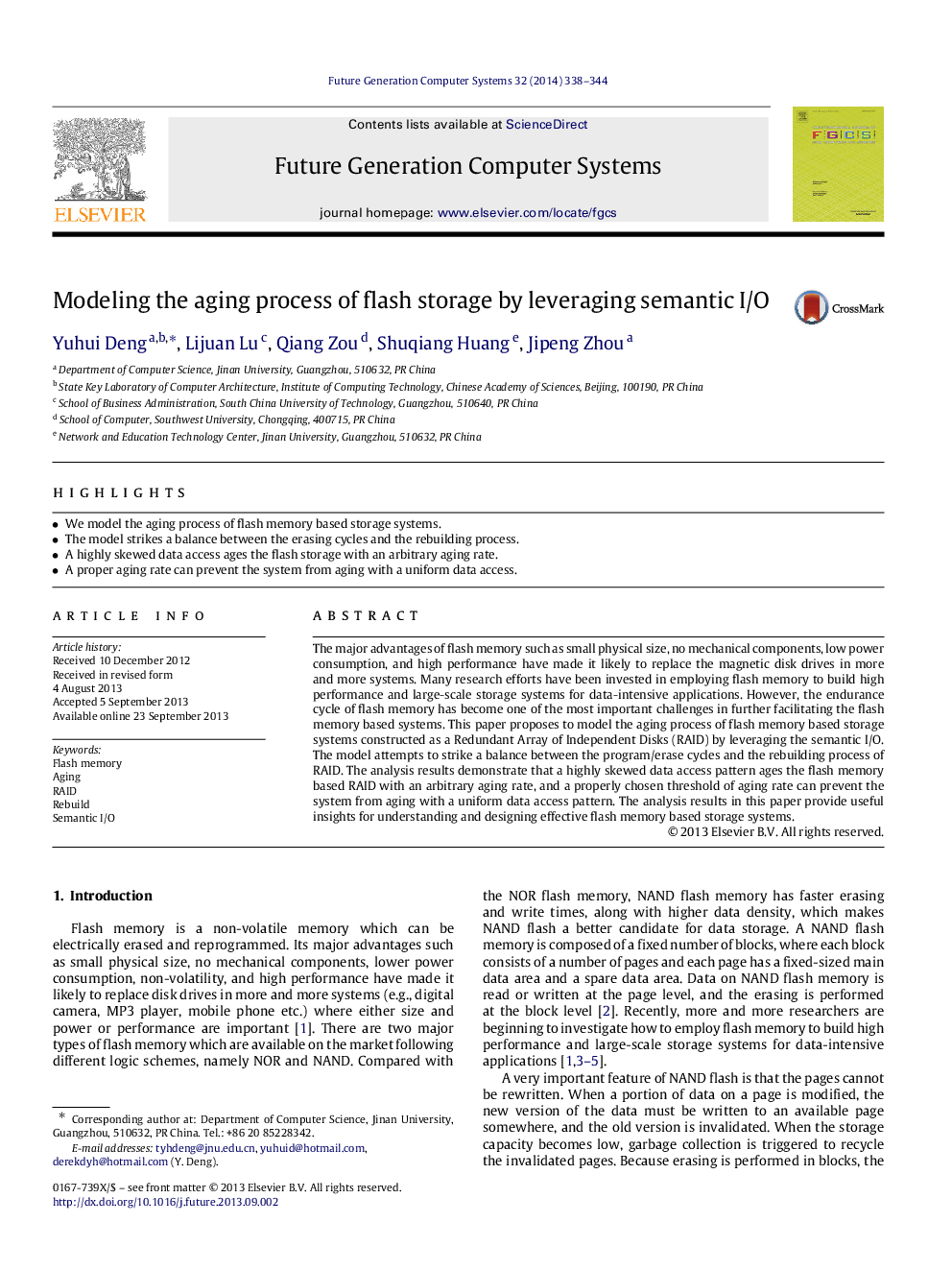| Article ID | Journal | Published Year | Pages | File Type |
|---|---|---|---|---|
| 6873624 | Future Generation Computer Systems | 2014 | 7 Pages |
Abstract
The major advantages of flash memory such as small physical size, no mechanical components, low power consumption, and high performance have made it likely to replace the magnetic disk drives in more and more systems. Many research efforts have been invested in employing flash memory to build high performance and large-scale storage systems for data-intensive applications. However, the endurance cycle of flash memory has become one of the most important challenges in further facilitating the flash memory based systems. This paper proposes to model the aging process of flash memory based storage systems constructed as a Redundant Array of Independent Disks (RAID) by leveraging the semantic I/O. The model attempts to strike a balance between the program/erase cycles and the rebuilding process of RAID. The analysis results demonstrate that a highly skewed data access pattern ages the flash memory based RAID with an arbitrary aging rate, and a properly chosen threshold of aging rate can prevent the system from aging with a uniform data access pattern. The analysis results in this paper provide useful insights for understanding and designing effective flash memory based storage systems.
Keywords
Related Topics
Physical Sciences and Engineering
Computer Science
Computational Theory and Mathematics
Authors
Yuhui Deng, Lijuan Lu, Qiang Zou, Shuqiang Huang, Jipeng Zhou,
